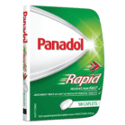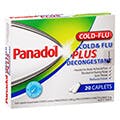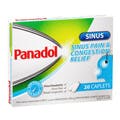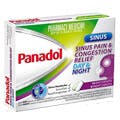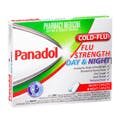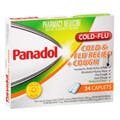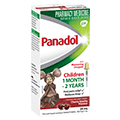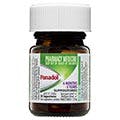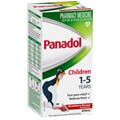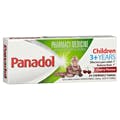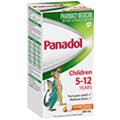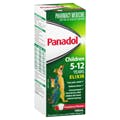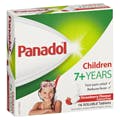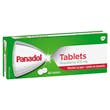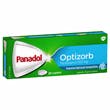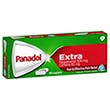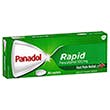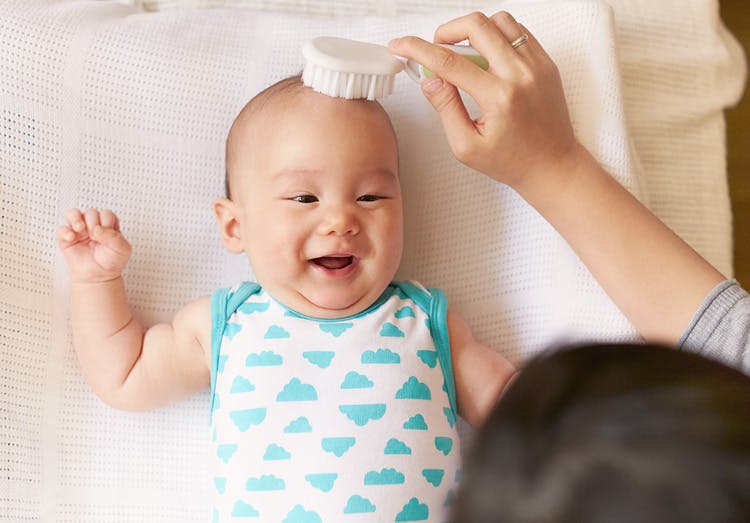

Colourfree Baby Drops 1-2 Months

Colourfree Suspension 1-5 Years

Chewable Tablets 3+

Suppositories 6 Months - 5 Years

Colourfree Suspension 5-12 Years

Elixir 5 - 12 Years

Suppositories 5-12 Years

Soluble 7+

Panadol Tablets

Panadol Caplets with Optizorb Formulation

Panadol Tablets with Optizorb Formulation

Panadol Gel Caps

Panadol Mini Caps

Panadol Suppositories

Panadol Back & Neck

Panadol Extra Caplets

Panadol Rapid Soluble

Panadol Rapid Caplets

Panado Rapid Handipak

Panadol Back & Neck Long Lasting

Panadol Osteo

Panadol Cold & Flu + Decongestant

Panadol Cold & Flu - Flu Strength (Day & Night)

Panadol Cold & Flu Relief + Cough

Panadol Cold & Flu MAX Hot Lemon
Compare Now (0/5)
- Product
- Format
- Age
- Key Features
- Ingredients

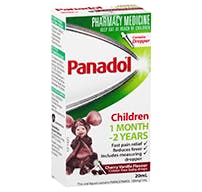
Colourfree Baby Drops 1-2 Months
- Concentrated Drops
- 1 Month - 2 Years
- Gentle on Tiny Tummies
- 500mg Paracetamol
- No gluten, lactose or sugar

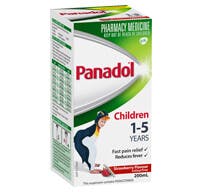
Colourfree Suspension 1-5 Years
- Suspension
- 1-5 Years
- Strawberry/Orange Flavour
- Active Ingredient: Paracetamol 24 mg/mL

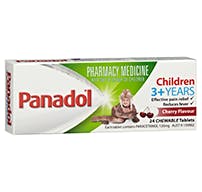
Chewable Tablets 3+
- Dissolvable Tablets
- 1-5 Years
- Perfect For Travel
- Active Ingredient: 120mg of Paracetamol per tablet


Suppositories 6 Months - 5 Years
- Suppositories
- 6 Months - 5 Years
- For vomiting
- Active ingredient: Paracetamol 125mg per suppository.

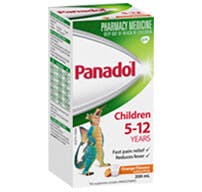
Colourfree Suspension 5-12 Years
- Suspension
- 5-12 Years
- Strawberry/Orange Flavour
- Active ingredient: Paracetamol 48 mg/mL

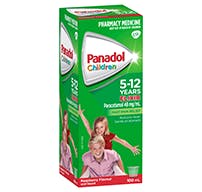
Elixir 5 - 12 Years
- Suspension
- 5-12 Years
- Fast & gentle relief
- Active ingredient: Paracetamol 48 mg/mL

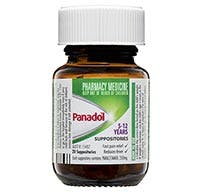
Suppositories 5-12 Years
- Suppositories
- 5-12 Years
- For vomiting
- Active ingredient: 250mg Paracetamol per suppository

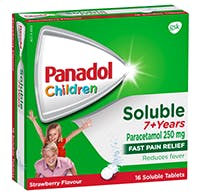
Soluble 7+
- Effervescent Tablets
- 7+ Years
- Absorbed quicker
- Active ingredient: Paracetamol

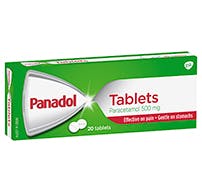
Panadol Tablets
- Tablets
- 12+ Years
- Basic Pain
- Active ingredient: 500mg Paracetamol

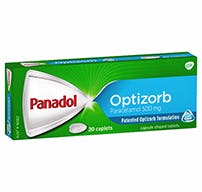
Panadol Caplets with Optizorb Formulation
- Caplets
- 12+ Years
- Quicker Absorbtion
- Active ingredient: 500mg Paracetamol

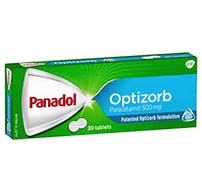
Panadol Tablets with Optizorb Formulation
- Tablets
- 12+ Years
- Quicker Absorbtion
- Active ingredient: 500mg Paracetamol

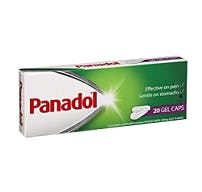
Panadol Gel Caps
- Caplets
- 12+ Years
- Easier to swallow
- Active ingredient: 500mg Paracetamol

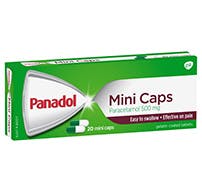
Panadol Mini Caps
- Caplets
- 12+ Years
- Easier to swallow
- Active ingredient: 500mg Paracetamol


Panadol Suppositories
- Suppositories
- 12+ Years
- For vomiting
- Active ingredient: 500mg Paracetamol per suppository.

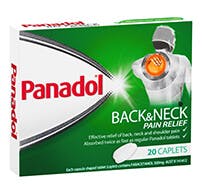
Panadol Back & Neck
- Caplets
- 12+ Years
- Fights Back Pain
- Active ingredient: 500mg Paracetamol

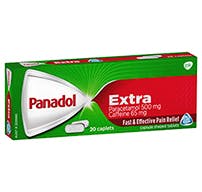
Panadol Extra Caplets
- Caplets
- 12+ Years
- Fight Tough Pai
- Active ingredient: 500mg Paracetamol , 65mg caffeine

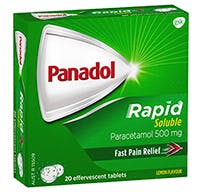
Panadol Rapid Soluble
- Dissolvable Tablets
- 12+ Years
- Absorbed 2x Faster
- Active ingredient: 500mg Paracetamol

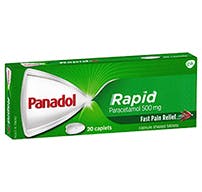
Panadol Rapid Caplets
- Caplets
- 12+ Years
- Absorbed 2x Faster
- Active ingredient: Paracetamol


Panado Rapid Handipak
- Caplets
- 12+ Years
- Absorbed 2x Faster
- Active ingredient: 500mg Paracetamol

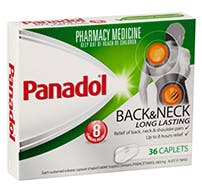
Panadol Back & Neck Long Lasting
- Caplets
- 12+ Years
- Up to 8 hours
- Active ingredient: 655mg Paracetamol

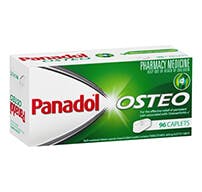
Panadol Osteo
- Tablets
- 12+ Years
- Up to 8 hours
- Active ingredient: 665mg Paracetamol

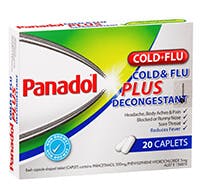
Panadol Cold & Flu + Decongestant
- Caplets
- 12+ Years
- With Decongestant
- 500mg Paracetamol


Panadol Cold & Flu - Flu Strength (Day & Night)
- Caplets
- 12+ Years
- Day & Night Relief
- 500mg Paracetamol

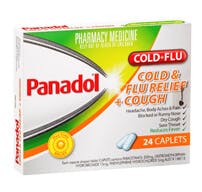
Panadol Cold & Flu Relief + Cough
- Caplets
- 12+ Years
- Cough Relief
- 500mg Paracetamol
Minimise
Colic In Babies
About 1 in 3 babies develop colic. Colic refers to periods of unexplained, distressed crying related to painful muscular spasms in the colon (bowel). The cause is unknown. Babies pull up their legs, arch their back and go red in the face. The crying usually lasts for more than a few hours a day, and for more than 3 days in a week. Colic typically starts in babies when they are 2-3 weeks old and lasts until about 4 months.

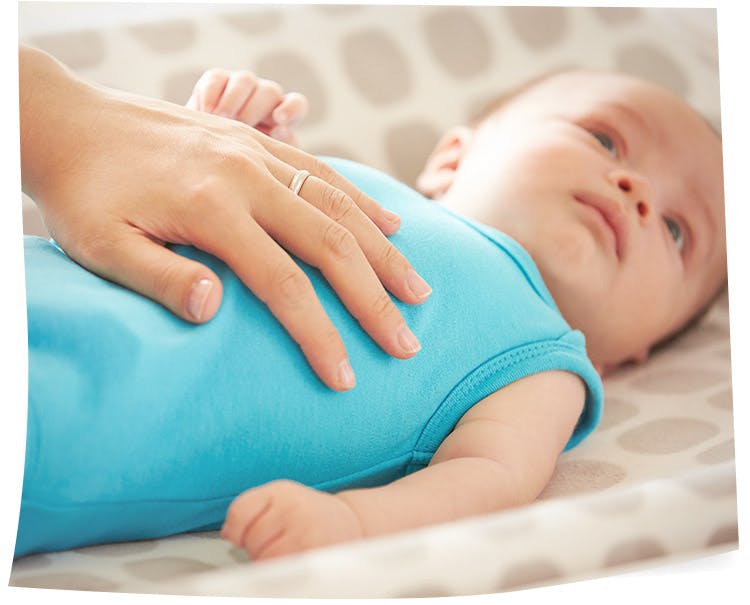

With a colicky baby, the spasms often start 20-30 minutes after the feed and may continue until baby expels wind or has a huge explosive bowel motion that seems to ease their discomfort.
Colic may be confused with reflux. However a colicky baby gains weight, doesn’t vomit and is not unsettled during or straight after every feed like a baby with reflux. With a colicky baby, the spasms often start 20-30 minutes after the feed and may continue until baby expels wind or has a huge explosive bowel motion that seems to ease their discomfort.
It’s difficult to know who finds colic harder, the parent or the baby. Although a colicky baby is obviously in distress and uncomfortable, colic is not usually a serious medical problem. Seek advice and support from your Child and Family Health Nurse or family doctor to check that the cause of your child’s prolonged crying isn’t a more serious medical problem.
Tips for managing a colicky baby
- Wrap your baby and try carrying them in different positions. Constant movement often soothes colicky babies.
- Stand up, hold your baby resting face-down over your arm at waist level, with their head at your elbow and your hand under their hips. Then pat your baby’s bottom gently and rhythmically with your other hand as you sway gently back and forth.
- Gently massage your baby’s abdomen in a clockwise direction.
- Discuss your baby’s feeding patterns with your Child and Family Health Nurse. They may be drinking too quickly or feeding too often.
- Try to feed baby before they get too hungry or distressed.
- Sometimes changes to your diet, if you are breastfeeding, or a change in the baby’s formula, can be helpful. Discuss this with your Child and Family Health Nurse.
- Consult your pharmacist or a natural health practitioner regarding over the counter remedies that may be helpful. You may also like to discuss this with your family doctor if you’re concerned.
** References:
Parenting and child health. Adelaide: Women's and Children's Health
Network; 2015. Available from www.cyh.com
Better Health Channel. Melbourne: Department of Health and Human
Services, State Government of Victoria, Australia; 2015. Available from
www.betterhealth.vic.gov.au











